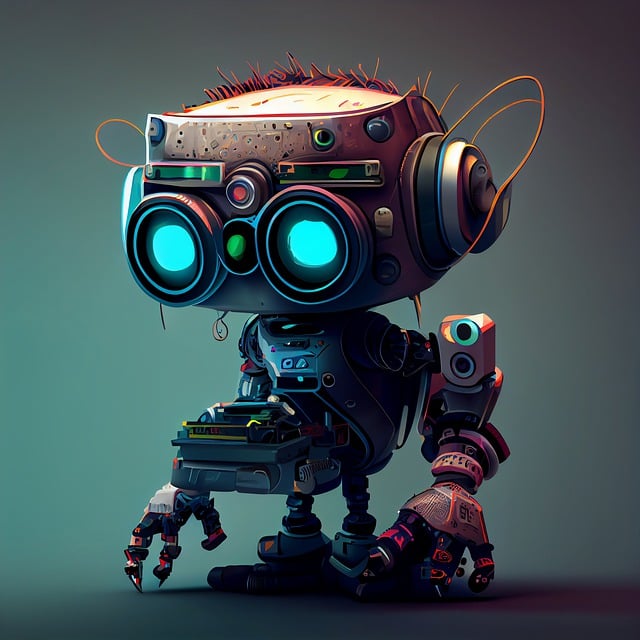Exploring Automated Trading Bots: Revolutionizing the Trading Landscape
Author: Jameson Richman Expert
Published On: 2024-08-12
Prepared by Jameson Richman and our team of experts with over a decade of experience in cryptocurrency and digital asset analysis. Learn more about us.
In recent years, the financial markets have undergone significant transformations, not only due to advancements in technology but also through the rise of automated trading systems. Among these systems, automated trading bots have emerged as crucial players, offering traders the ability to execute trades with precision and speed. In this comprehensive article, we will explore the intricacies of automated trading bots, how they function, their advantages and drawbacks, and their impact on the trading ecosystem. Additionally, I will share my personal insights throughout the discussion to enhance the understanding of this pivotal aspect of modern trading.

What Are Automated Trading Bots?
Automated trading bots are software programs designed to automatically execute trades in financial markets based on pre-defined criteria. These bots operate on algorithms that analyze various market conditions, thereby facilitating trades without human intervention. This level of automation allows traders to either fully relying on machines or combine their inputs with bots for more effective decision-making.
How Do Automated Trading Bots Work?
The underlying mechanics of trading bots can be distilled into several key components:
- Algorithm Development: Bots rely on trading algorithms, which are essentially a set of rules that dictate buying and selling actions. These algorithms can be based on technical indicators, market sentiment, or historical data analysis.
- Market Analysis: Bots constantly analyze market data to identify potential trading opportunities. This includes tracking price movements, volume changes, and even external factors such as news articles.
- Execution of Trades: Once a trading signal is identified, the bot executes the trade instantly, ensuring that the trader capitalizes on the opportunity, often more quickly than a human could react.
- Risk Management: Most trading bots come equipped with risk management features, such as stop-loss orders and position sizing, to minimize potential losses.
Types of Automated Trading Bots
There are several types of automated trading bots, each catering to different trading styles and strategies:
- Trend-Following Bots: These bots analyze past price movements and attempt to identify establishing trends to execute trades in the direction of the trend.
- Arbitrage Bots: These look for price discrepancies across different exchanges or markets, taking advantage of differences to make profits.
- Market-Making Bots: These bots provide liquidity to markets by placing buy and sell orders simultaneously, profiting from the spread.
- Mean Reversion Bots: They operate on the principle that prices revert to their historical averages, taking advantage when prices diverge significantly from those averages.
Advantages of Using Automated Trading Bots
Automated trading bots offer several benefits that can enhance a trader's experience:
1. Speed and Efficiency
One of the most significant advantages of using a trading bot is its speed. Bots can analyze market data and execute orders within milliseconds, a feat that human traders simply cannot match. In today's fast-paced markets, every second counts; therefore, this efficiency is crucial for maximizing profits.
2. Emotionless Trading
Fear and greed are two of the most detrimental qualities in trading. Automated bots eliminate these emotions from the equation, adhering strictly to the trading plan. This is particularly beneficial for novice traders who may struggle with emotional decision-making.
3. Backtesting Capabilities
Many bots come with built-in backtesting functions that allow traders to test their algorithms against historical data. This feature is invaluable for assessing the potential profitability of different strategies before risking real capital.
4. 24/7 Market Monitoring
Unlike human traders, automated bots can operate around the clock, taking advantage of markets irrespective of time zones. This aspect is particularly appealing in the context of global trading markets.
Drawbacks and Considerations of Automated Trading Bots
While the advantages are compelling, there are also significant drawbacks and considerations to weigh:
1. Technical Failures
Automated trading systems are not infallible. Technical glitches, such as software bugs or internet connectivity issues, can result in missed trades or incorrect executions. Such failures can lead to considerable losses if not monitored properly.
2. Over-Optimization
In the quest for perfection, traders may over-optimize their bots based on historical data, creating a strategy that performs well in backtesting but falls short in real-world conditions. This phenomenon, known as data mining or overfitting, can be incredibly misleading.
3. Lack of Market Adaptability
Market conditions can change rapidly due to various factors, including economic indicators, geopolitical events, or shifts in trader sentiment. Bots that rely on fixed algorithms may struggle to adapt to these changes, leading to suboptimal trading outcomes.
4. Costs and Fees
Some automated trading platforms charge fees, which can eat into profits. Traders must evaluate the long-term cost-effectiveness of using a trading bot versus their potential returns.

The Future of Automated Trading Bots
The rapid advancement of technology suggests that the future of automated trading will likely see even greater optimization and sophistication. Artificial intelligence (AI) and machine learning are expected to revolutionize trading bots, allowing them to analyze vast amounts of data more efficiently and adaptively than ever before.
My Personal Take
From my perspective, while automated trading bots present a remarkable opportunity for enhancing trading efficiency and effectiveness, it is critical for traders to maintain a solid understanding of market principles. Relying solely on automation without a firm grasp of the underlying mechanisms can lead to unexpected consequences. Sustainability in trading comes not from technology alone but from the seamless integration of human judgment and automated precision.
Conclusion
Automated trading bots represent a significant leap forward in trading technology, offering unparalleled speed, efficiency, and the removal of emotional biases. However, their integration into the trading world is not without challenges. As we look towards the future, understanding the interplay between automation and human insight will be essential. By approaching automated trading with a balanced strategy, traders can leverage the benefits of these innovative tools while mitigating their risks.